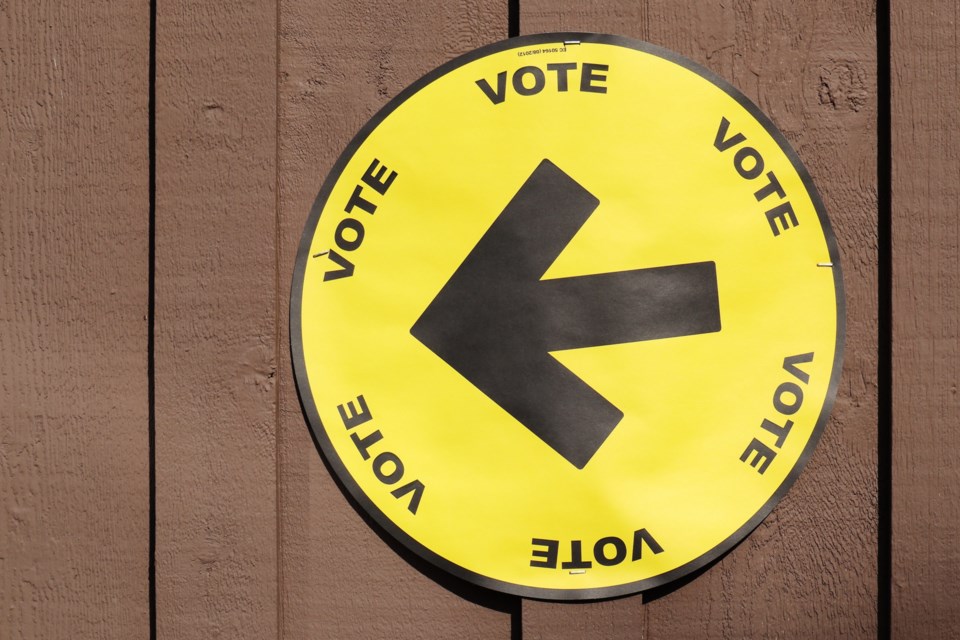As of today, British Columbians have ordered 450,000 mail-in ballots. Assuming this pace continues until the deadline, some 800,000 British Columbians might vote by mail in this election.
Up from some 6,500 in 2017, that would be an increase more than an order of magnitude. It’s not hard to understand why: we’re in a pandemic.
Just because of the mess down south and some of the allegations made there, it’s worth saying clearly: in BC, voting by mail is secure. That doesn’t mean there aren’t real and valid concerns about timelines and when final results will indeed be final. And it’s fair to wonder how Canada Post and Elections BC will cope with a sudden mountain of mail. But by and large, voting by mail works well; it’s how we conduct referenda here, as recently as 2018.
All that said, there’s a curveball. Many voters won’t be receiving ballots with a list of candidates to choose from – one of the consequences of a snap election. Instead, they’ll essentially receive a blank form.
For most voters, this probably won’t be a problem. And if they’re confused, the package includes a reminder which riding they’re in, and a number to contact with questions.
But given literally blank ballots, there will inevitably be some grey area. No pun intended.
Let’s say you, dear voter, intend for Jane Lee of the Good Party. After all, who wouldn’t?
Elections BC’s blank ballot instructions indicate that writing either “Jane Lee” or “Good Party” work. Even just “Lee,” unless the Bad Party also has a candidate named Lee.
Okay, that’s easy.
In cases where the voter makes small errors, that will also count. So “Jane Leigh” likely passes muster.
“Things like spelling mistakes aren’t grounds for rejecting a ballot,” Elections BC’s Andrew Watson.
As long as the voter’s intention is clear, it’s still valid – but inevitably, there will be cases where it’s a little hazier.
“At the end of the day, it’s up to the election officials who are actually counting the ballot to make that call.”
During a TV appearance yesterday, John Horgan said voters could mark the name of their preferred party leader, essentially creating an almost presidential election.
"You can just identify the party you want to support, you can identify the leader of the party you want to support, you can identify the candidates that you know and I think that will reduce spoiled ballots," Horgan said on CTV.
The problem? He was wrong. It wouldn’t count.
“It has to be a candidate who’s running in your riding,” explains Watson.
Unless they live in Langford-Juan de Fuca, a voter writing “John Horgan” would be mailing a spoiled ballot. Horgan later explained that he misspoke, and fair enough. But if someone as invested in the process as he can make a mistake, so can the average voter – and said average voter often does think in terms of voting for (or against) party leaders, not local candidates.
“If voters are marking their ballot now, and they support a party – just the party name would be fine,” explains Watson.
That too will count, including slight errors. So for example, “Liberal” will be taken to indicate BC Liberal, and “Gren” is a clear spelling mistake. “Democrat” or “CPC,” which sound a bit like BC parties, should not.
The only problem is assuming your party actually has a candidate.
For example, Green leader Sonia Furstenau says her party will likely not find candidates for at least some of BC’s 87 ridings by the deadline. But if you’re a Green supporter who marks and mails your ballot immediately – and it turns out there’s no Green candidate in your riding – that’s a spoiled ballot.
Had this individual voted in person, they might well have been initially confused. But they’d have the chance to ask an official, get the info, and carry on. Likely, they’d just vote for their second choice. Instead, with a blank ballot just listing their party, their vote won’t count.
In a province where the remnants of the BC Conservative Party are routinely mistaken for the federal Conservative Party in polls, voter confusion isn’t unknown.
“It is beneficial to have an election official (in person) providing guidance,” admits Watson, “that’s why we’re trying to push public awareness and provide enough instruction as we can in the voting package.”
Elections BC is doing everything it reasonably can. But if history is any guide, there will be ridings that come down to a handful of ballots – it would be a shame if some are decided by unintentionally spoiled ballots.
The lesson? Do your homework before voting.
To count, Elections BC has to receive all mail-in ballots by 8 pm of October 24.
Maclean Kay is Editor-in-Chief of The Orca
SWIM ON:
- On Monday, Maclean Kay covered a hectic day of campaigning - and the campaign's first big splash.
- Two years ago, another vote-by-mail campaign was underway, the referendum on Proportional Representation. The complaints started almost from day one.
- The results of that one surprised many.



